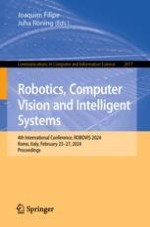2024 | OriginalPaper | Buchkapitel
Fast Point Cloud to Mesh Reconstruction for Deformable Object Tracking
verfasst von : Elham Amin Mansour, Hehui Zheng, Robert K. Katzschmann
Erschienen in: Robotics, Computer Vision and Intelligent Systems
Verlag: Springer Nature Switzerland
Aktivieren Sie unsere intelligente Suche, um passende Fachinhalte oder Patente zu finden.
Wählen Sie Textabschnitte aus um mit Künstlicher Intelligenz passenden Patente zu finden. powered by
Markieren Sie Textabschnitte, um KI-gestützt weitere passende Inhalte zu finden. powered by
